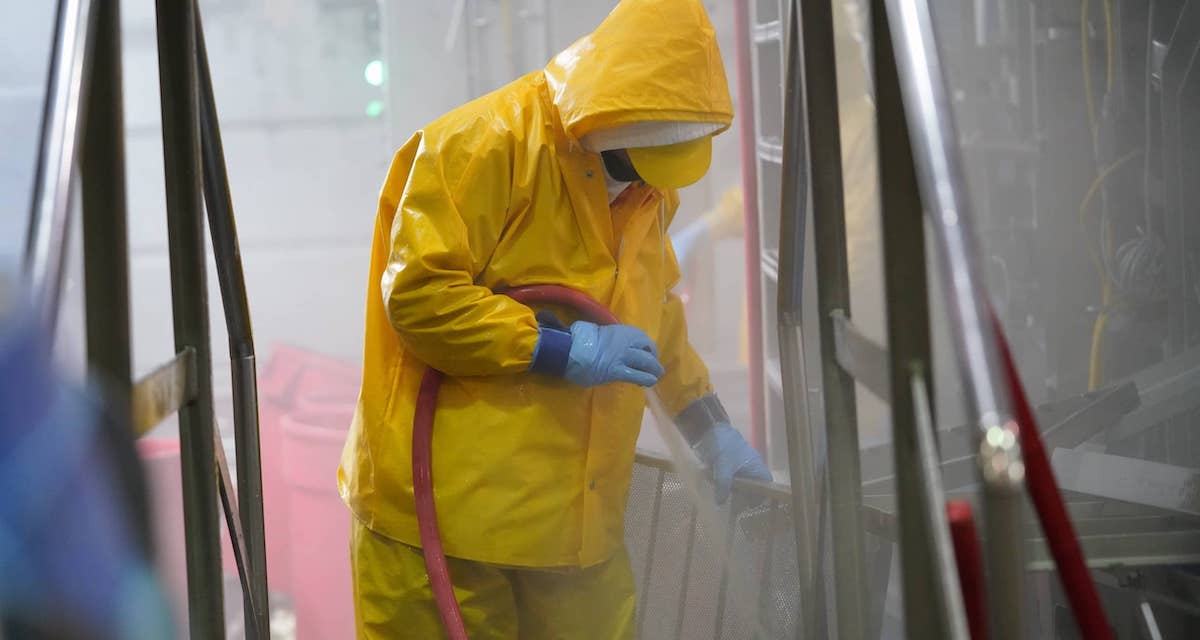Posted by Zosi Team

As human beings, we all feel a need for cleanliness, hygiene, and sanitation when it comes to our food preparation.
That’s all sanitation is, right? Just a large-scale version of what we do to keep a tidy kitchen. In fact, sanitation is much more involved than scrubbing dishes in the sink or wiping down a counter. While the desired end result is essentially the same, there are additional factors involved in food sanitation on a production and manufacturing level. The principles involved and the fundamentals at play form a base to outlining effective sanitation in your facility.
Seven Steps to Effective Sanitation
- Dry Pickup
The first step to effective food safety and sanitation is removing excess soils with dry pickup. In areas near the production floor, like dry goods warehouses or employee welfare areas, dry pickup might be the only cleaning method you need. As the name “dry” implies, this step is cleaning without water–maybe scraping or using a brush or tools to remove any dirt. In production areas, dry pickup might go a bit further. These areas might also need vacuuming, which not only removes or loosens dry material, it also collects what it removes so it can be taken away from the production area. - Pre-Rinse Program
Following dry pickup, begin your pre-rinse program. This eliminates more dirt and grime before you apply compounds or scrub equipment. Use a top-down approach and rinse with hot water and high pressure to fully loosen anything that might be on your equipment or food contact surfaces. Some pre-rinse might contain detergents in low concentrations to make the process easier. It’s always best to complete this step soon after production ends to reduce residual buildup on equipment. - Cleaning Agent or Detergent Application
After the initial two steps of removing any dirt or grime, start applying detergents and/or cleaners. Be sure to consider that water characteristics can have an impact on detergents. Some chemicals might interact with elements of the water and make it less effective. Choose your cleaning agent or compound based on what kind of soil is there. Heavy organic residue oil (fats, meat residues, etc.) need more alkaline cleaners to successfully remove them. - Post-Rinse Procedure
Post-Rinse keeps cleaning agents and detergents from transferring to food. You don’t want possibly abrasive or harmful cleaners in your product. Post-rinse is just one more rinsing step to remove cleaners from equipment and places that might come in contact with food. - Preliminary Inspection
A preliminary inspection typically involves segmented inspections. They might involve several groups or departments as well as multiple layers of staff, inspecting areas fully or in a randomly sampled inspection process, including equipment or hygienic zones. People who work in a particular area might be more familiar with spots where there’s more likely to be buildup. By breaking this step down into separate areas and groups of people, you divide the work to make sure it’s well done. - Pre-Op Inspection
Your last visual review is the pre-op, or pre-operative, inspection. This checks how clean your facilities and equipment are. Pre-op inspections are very detail-oriented and require highly trained personnel. These specialists inspect areas, lines, or pieces of equipment using a random generator program. If anything is found during the pre-op inspection, you have to start taking (and documenting) corrective actions to keep the entire sanitation program from breaking down. - Sanitizer Application
The last step for sanitation is applying sanitizers. After the pre-op inspection is complete, apply sanitizers to food contact surfaces and nearby zones, according to your SSOPs. Sanitizers don’t work on areas that haven’t already been cleaned—they sanitize at the microbiological level. This one step doesn’t replace the rest of the cleaning and sanitation process.
Conclusion
Why is sanitation important? Food sanitation is more than just rules and regulations. Food safety and sanitation are incredibly important pieces of your business. They make your products safe for your customers, keep recalls down, and increase your revenue. Keeping these steps in mind helps you know that your production is done in a clean, sanitary environment. This good food hygiene helps you have a positive contribution to food supply on a global scale.



